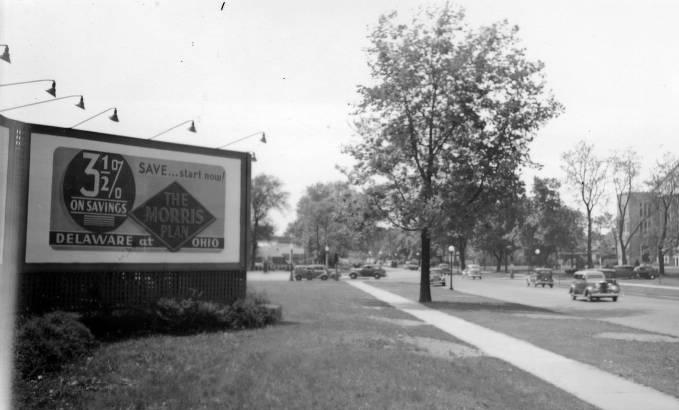Arthur J. Morris originated the Morris Plan in Virginia in 1910 to lend money to working people at reasonable rates. This idea proved so popular that Morris Plans began appearing in cities across the nation.

In 1921, a group of Indianapolis community leaders, including Charles F. Coffin, president of State Life Insurance Company, and L. M. Wainwright, president of Diamond Chain and Manufacturing, organized the Indianapolis Morris Plan. For several years, Coffin and Wainwright served as officers of the locally owned institution, located throughout most of its history at 110 East Washington Street.
In 1936, Morris Plan merged with Schloss Brothers Savings and Loan, with William L. Schloss as president. By the end of 1946, the institution’s assets totaled $2.5 million. In 1953, Schloss introduced the Morris Plan Free Charge Account and, by the following year, counted 23,000 individuals as holders of the charge plates, which were accepted at over 400 local and outlying stores. By 1958, with assets now over $36 million ($325,741,690 in 2020), Indianapolis Morris Plan was the largest savings and loan institution, without branches, in the nation. One-third of Marion County families were members.

In 1967, the state legislature allowed Morris Plan to organize branch offices for the first time. Within two years, the institution opened four branches in the city. By 1973, it had over 125,000 customers and 500 employees.
In the mid-1970s, Firstmark Corporation purchased Morris Plan, but, by 1987, Firstmark was experiencing serious financial problems and attempted to curb its losses by selling the parent company’s subordinated debentures, which were really unsecured loans, to Morris Plan depositors. When Firstmark filed Chapter 11 bankruptcy on August 26, 1987, Morris Plan customers lost their funds in these uninsured investments, and some filed civil suits against the parent company.
On December 7, Summcorp, the parent company of Summit Bank, purchased most of Morris Plan’s assets and became Summit Bank of Indianapolis. In February 1993, Summit Bank of Indianapolis merged with , which later became Chase Bank.

Help improve this entry
Contribute information, offer corrections, suggest images.
You can also recommend new entries related to this topic.




